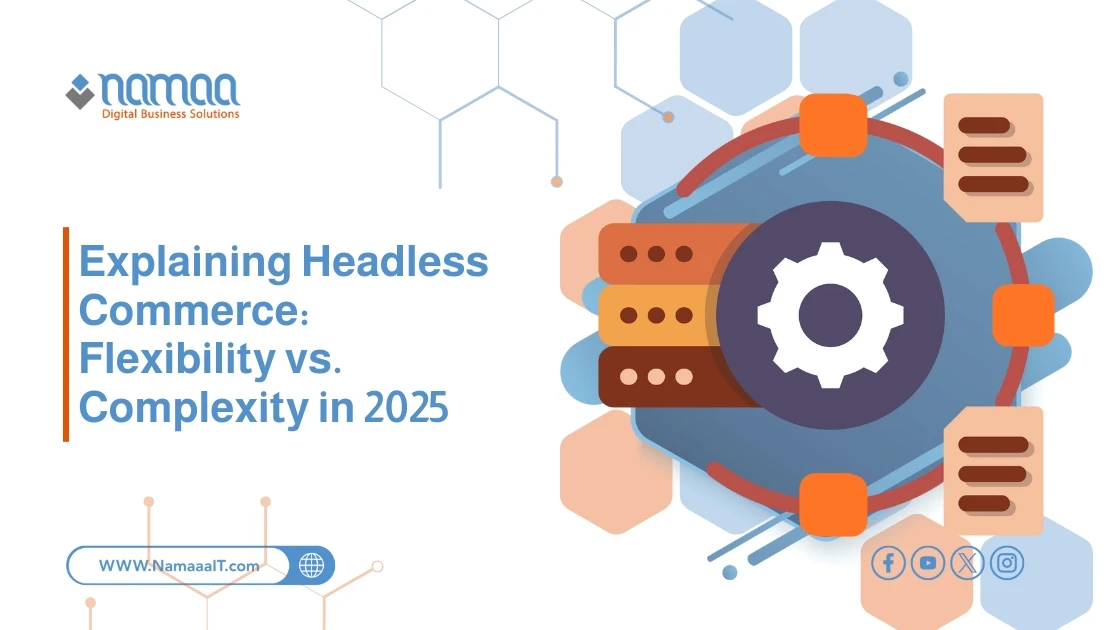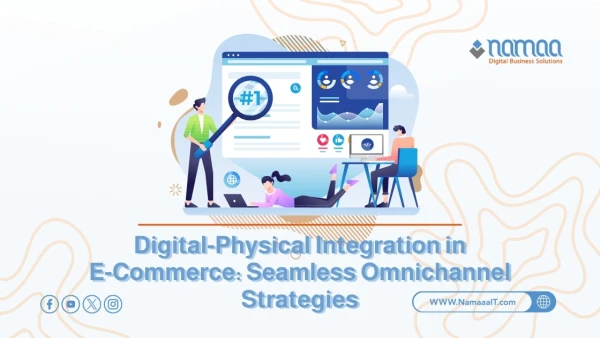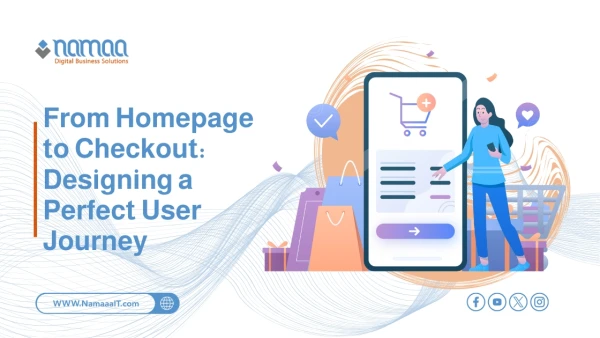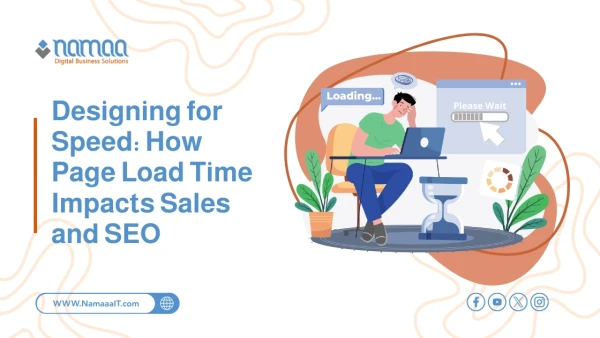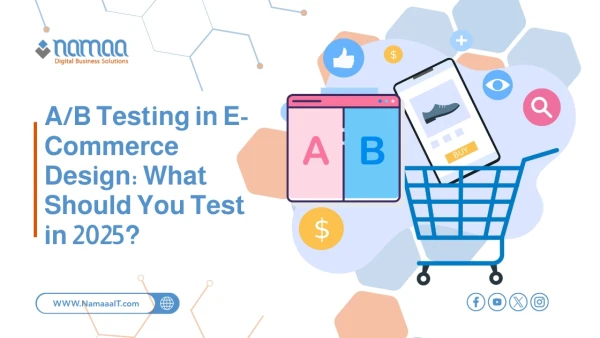E-commerce in 2025 is moving toward more flexible and customizable models, with headless commerce leading this transformation. This architecture separates the front-end from the back-end, giving development teams more freedom to design user experiences without the constraints of traditional platform structures. However, this flexibility comes at a cost. As tools and integration requirements multiply, significant technical challenges emerge. In this article, we explain what headless commerce means, its pros and cons, and why it's becoming a strong contender for companies aiming to scale and offer superior user experiences.
What is Headless Commerce?
Headless commerce is a technical architecture that separates the front-end (user interface) from the back-end (which manages databases, orders, products, etc.). In this model, different interfaces communicate with servers and back-end systems via APIs, allowing developers to build custom front-ends for any type of device or platform.
Unlike traditional systems that bundle design and management into one package, headless allows the use of any programming language or framework to build user interfaces—for websites, mobile apps, or even IoT devices.
The key advantage is flexibility. Companies can offer cutting-edge, rapidly updatable digital experiences without overhauling the entire system. This model also facilitates seamless expansion across multiple channels (omnichannel), enabling a unified experience on all platforms.
However, headless isn’t a perfect fit for everyone. It requires robust technical resources, skilled development teams, and a clear integration management plan. Still, for companies pursuing customized, fast-evolving experiences, headless is a promising model that opens the door to limitless digital commerce opportunities.
Traditional Commerce vs. Headless
Traditional commerce relies on unified systems where the front-end and back-end are integrated into a single platform. For example, platforms like PolarisMAX or the default mode of Magento manage both design and content from a single admin panel. This model suits small and medium businesses seeking a quick launch with lower costs and limited complexity.
In contrast, headless separates these layers. The back-end continues to handle products, orders, and inventory, while the front-end can be developed independently using any preferred technology.
The biggest advantage of headless is the ability to fully customize the user experience and make updates more quickly without affecting the core system. It also supports an unlimited number of distribution channels (website, app, POS, smart TVs, etc.) without rebuilding the back-end.
Meanwhile, traditional commerce offers a ready-made, fast experience—but with limited flexibility. Any change often requires modifying the entire system, making it harder to integrate new channels or create unique experiences.
Thus, headless is ideal for companies seeking technical distinction and unconventional user experiences, while traditional commerce remains the best option for those focused on simplicity and cost-effective operations.
Challenges of Headless Commerce
Despite its high flexibility, headless commerce comes with several serious challenges. The first is system integration. When the front-end is decoupled from the back-end, all components (content management, payment systems, inventory) must communicate seamlessly via APIs. Any failure in integration could lead to broken user experiences or data errors.
The second challenge is cost. Implementing headless often requires building custom components from scratch, which demands experienced developers, longer development cycles, and ongoing maintenance. Businesses without strong internal tech teams may have to outsource, significantly increasing costs.
The third challenge is management complexity. In traditional systems, the marketing or content team can manage everything from a single control panel. In headless, teams may need additional tools or technical support for even simple changes, reducing day-to-day agility.
These challenges don’t mean the model is unsuitable, but they do highlight the importance of solid planning, proper resource allocation, and choosing a platform that supports headless effectively.
learn more: Data-Driven Product Launch Plan for E-commerce Stores
Is Headless Commerce Right for Your Business?
Choosing the right commerce model is not just a technical decision, but a strategic one. To determine whether headless commerce fits your business, consider the following:
- User experience customization: If your brand emphasizes innovation and wants to deliver a unique digital shopping experience, headless gives you the flexibility to do just that.
- Company size and team structure: Small businesses without strong dev teams may struggle with headless. Larger organizations with multiple technical teams can benefit from distributing tasks more flexibly.
- Growth plans: If you plan to expand to apps, POS, or smart displays, headless offers the architecture to support this from the start—without later system overhauls.
- Integration capabilities: If your operations rely heavily on external tools (CRMs, ERPs, marketing software), headless gives you the freedom to integrate them seamlessly.
Ultimately, the decision depends on balancing the flexibility you want with the resources you have. If you’re ready to invest in technology and infrastructure, headless can give you a real competitive edge in a rapidly evolving market.
Headless vs. Composable Commerce
Headless commerce and composable commerce are sometimes used interchangeably, but they differ in concept and implementation. Headless simply refers to decoupling the front-end from the back-end using APIs, enabling flexible user experience development.
Composable commerce, however, is a broader approach that builds the digital experience from independent microservices (such as payment systems, content management, shipping, offers, etc.) that can be added, removed, or changed as needed.
In other words, headless is part of composable. A composable architecture always uses headless principles, but not all headless systems are fully composable. Brands adopting composable have precise control over each element of their digital commerce stack, allowing for greater flexibility in building new features, scaling, or adapting to different markets.
Integration between the two often starts gradually. Brands may begin with headless and evolve toward composable by adding independent components rather than relying on all-in-one solutions. However, the more components you add, the greater the need for effective management and precise integration.
In conclusion, composable commerce offers higher customization and growth potential—but requires advanced planning and technical execution. Businesses seeking a scalable, future-proof digital commerce infrastructure will find this model a strong opportunity for transformation.
SEO Impact of Headless Commerce
Adopting a headless architecture unlocks advanced user experiences but introduces serious SEO challenges. Unlike traditional systems that serve ready-to-crawl HTML pages, headless websites often rely on JavaScript to generate content dynamically. This can make it harder for search engines to crawl and index content if not handled properly.
On the opportunity side, headless offers greater control over UX elements like URL structure, titles, and schema markup, aligning well with modern SEO practices. It also enables content delivery across multiple channels (like apps and voice assistants) without duplicating effort—boosting content visibility.
The main challenge is making content accessible to search engines. Techniques like server-side rendering (SSR) or static site generation (SSG) are essential to ensure complete, crawlable pages. Monitoring load times and UX performance is also crucial, as both are ranking factors.
Moreover, tight coordination between development and marketing teams is needed to ensure the tech setup doesn’t harm search rankings. Dynamic content must be carefully planned, and metadata often needs to be manually added.
Thus, headless can boost SEO through custom, fast experiences—but it demands precise technical planning to maintain visibility and performance.
Real-World Success Stories with Headless Commerce
Several global companies have seen major success after adopting headless commerce, enabling them to deliver flexible, personalized shopping experiences.
Nike
Nike faced challenges in meeting the demands of its growing mobile audience. It adopted a headless setup using React and Node.js to build a single-page application (SPA) that enhanced mobile UX. This shift led to a significant increase in mobile engagement and sales.
Burrow
The furniture company Burrow wanted a unique shopping experience beyond templates. By adopting headless, they created a fully custom front-end. Their marketing team could make changes without developer help, boosting efficiency and innovation.
Koala
Australian furniture brand Koala used Progressive Web Apps (PWAs) in a headless model to provide a seamless experience across devices. This improved site speed and allowed for more product and category listings, driving significant sales growth.
Devialet
French audio tech company Devialet implemented headless commerce to deliver a high-end digital experience that matched the quality of its products. The strategy improved conversion rates and reinforced its brand image as a tech innovator.
Summary
✅Nike saw a major boost in mobile sales after switching to a headless setup with React and Node.js.
✅Burrow empowered marketers to make changes independently, increasing speed and efficiency.
✅ Koala improved website speed and cross-device compatibility, leading to higher conversion rates.
✅ Devialet aligned its premium digital experience with its brand image, resulting in better performance and engagement.
✅ Victoria Beckham Beauty successfully launched a fast, custom site with lower bounce rates and better user engagement.

